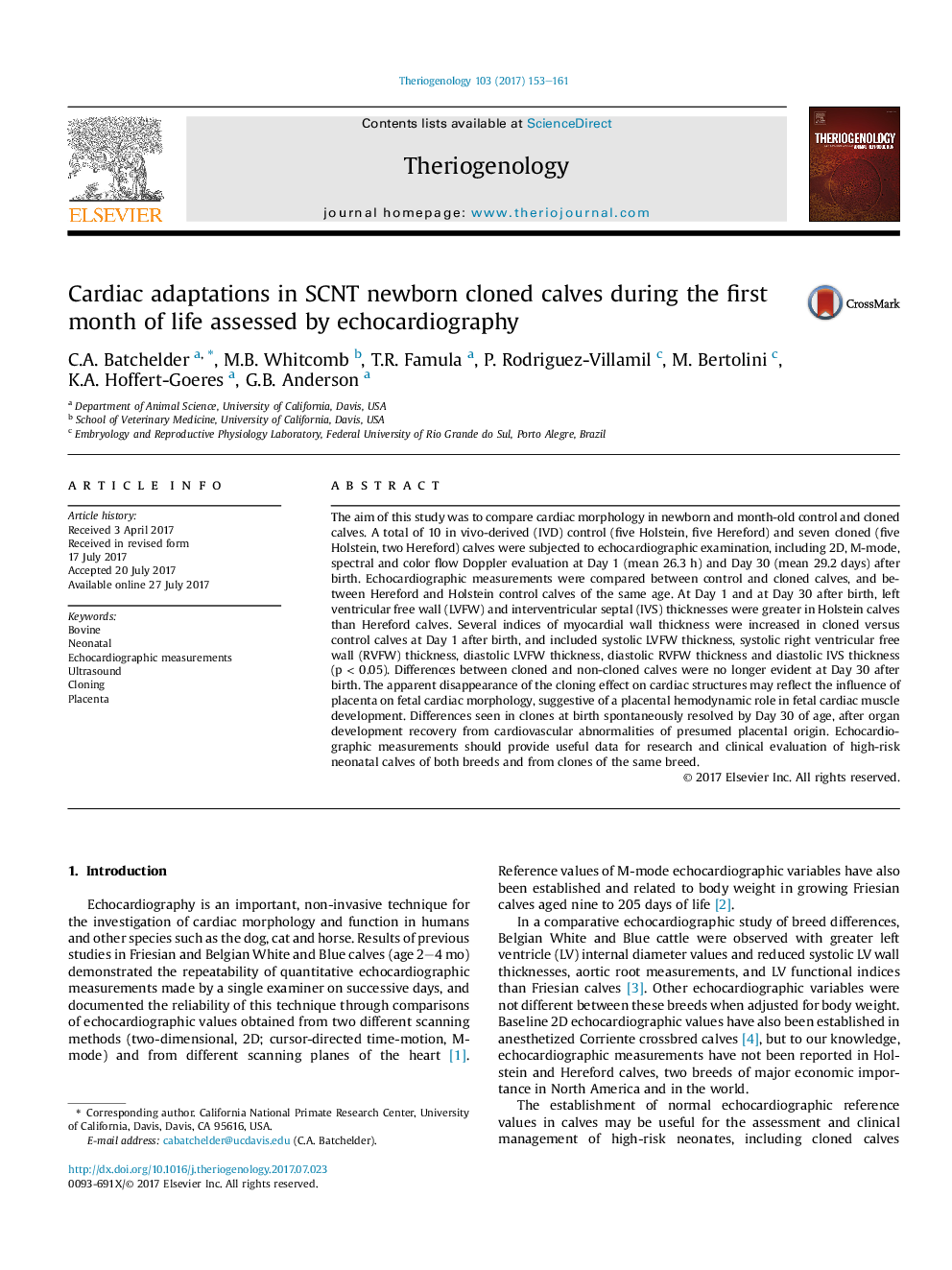| Article ID | Journal | Published Year | Pages | File Type |
|---|---|---|---|---|
| 5522917 | Theriogenology | 2017 | 9 Pages |
â¢Echocardiographic values were established in newborn and month-old Holstein and Hereford non-cloned control calves.â¢Cardiac morphology was compared in Holstein and Hereford control and cloned calves of the same breeds and ages.â¢Left ventricular free wall and interventricular septal measurements were greater in neonatal Holstein than Hereford calves.â¢Several indices of myocardial wall thickness were increased in cloned versus control calves at birth.â¢Heart differences seen in clones at birth spontaneously resolved by Day 30, when clones were similar to control calves.
The aim of this study was to compare cardiac morphology in newborn and month-old control and cloned calves. A total of 10 in vivo-derived (IVD) control (five Holstein, five Hereford) and seven cloned (five Holstein, two Hereford) calves were subjected to echocardiographic examination, including 2D, M-mode, spectral and color flow Doppler evaluation at Day 1 (mean 26.3 h) and Day 30 (mean 29.2 days) after birth. Echocardiographic measurements were compared between control and cloned calves, and between Hereford and Holstein control calves of the same age. At Day 1 and at Day 30 after birth, left ventricular free wall (LVFW) and interventricular septal (IVS) thicknesses were greater in Holstein calves than Hereford calves. Several indices of myocardial wall thickness were increased in cloned versus control calves at Day 1 after birth, and included systolic LVFW thickness, systolic right ventricular free wall (RVFW) thickness, diastolic LVFW thickness, diastolic RVFW thickness and diastolic IVS thickness (p < 0.05). Differences between cloned and non-cloned calves were no longer evident at Day 30 after birth. The apparent disappearance of the cloning effect on cardiac structures may reflect the influence of placenta on fetal cardiac morphology, suggestive of a placental hemodynamic role in fetal cardiac muscle development. Differences seen in clones at birth spontaneously resolved by Day 30 of age, after organ development recovery from cardiovascular abnormalities of presumed placental origin. Echocardiographic measurements should provide useful data for research and clinical evaluation of high-risk neonatal calves of both breeds and from clones of the same breed.
